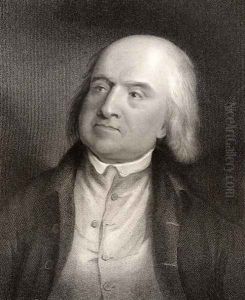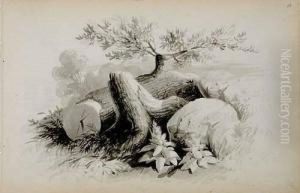William Henry Worthington Paintings
William Henry Worthington was a British engraver born in 1795, whose lifetime spanned the late 18th and early 19th centuries, a period marked by significant changes in the art world, particularly in Britain. Despite the limited information about his early life and training, Worthington emerged as a skilled artist in the realm of engraving, a technique that was highly valued during his time for its ability to reproduce and disseminate artworks and illustrations.
Worthington's career is noted for its contributions to the reproduction of paintings and the creation of original prints. He worked primarily on copper and steel, which were the predominant materials for engravers in his era. His technique and skill allowed for the detailed and delicate reproduction of works, which was essential for the spread of artistic and scientific knowledge during a time when other forms of mass reproduction were not available.
Throughout his career, Worthington collaborated with several notable artists and publishers, contributing to books, periodicals, and standalone prints. His works include a range of subjects, from portraits to landscapes, reflecting the eclectic tastes and interests of the British public at the time. Despite the lack of extensive records about his personal life or thoughts on art, his surviving works suggest a meticulous craftsman dedicated to his trade.
William Henry Worthington's death in 1839 marked the end of a career that had seen the transition from the handcrafted artistry of the late Georgian period to the early Victorian era, which would soon embrace new technologies and methods of reproduction. His engravings remain as a testament to the skill and artistic sensitivity of engravers in the 19th century, capturing the nuances of light, shadow, and texture that characterized the original works they reproduced. Worthington's legacy, though not as widely recognized as some of his contemporaries, is preserved in the collections of museums and libraries, offering insight into the craftsmanship and aesthetic values of his time.

